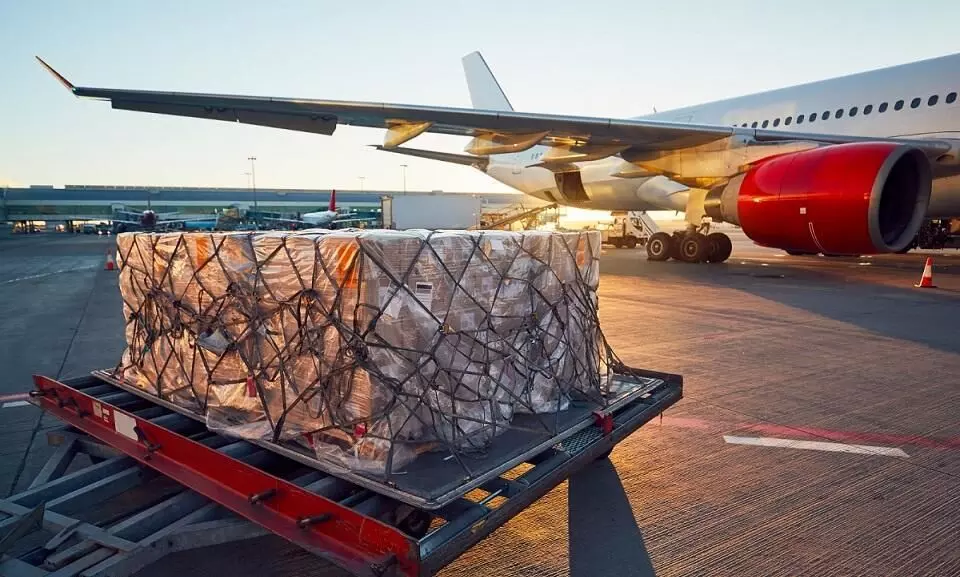
Cargo demand drops nearly 15% in Jan: IATA
Capacity up 4% in January, first YoY growth in capacity from Oct 2022; international demand down over 16%

Industry-wide cargo tonne-kilometres (CTKs) fell 14.9 percent YoY in January 2023, marking the 11th month of consecutive annual decline in global demand, according to the latest update from the International Air Transport Association (IATA).
"Compared with January 2019 cargo traffic, industry CTKs contracted by 11 percent. Seasonally adjusted (SA) air cargo traffic decreased by 10.9 percent YoY, albeit with a 2 percent increase from December 2022."
International CTKs declined slightly faster, registering a 16.2 percent YoY decline in January.
Cargo capacity – measured by available cargo tonne-kilometres (ACTKs) – increased 3.9 percent YoY in January, "reflecting the strong recovery of belly cargo capacity in passenger airline markets. Cargo load factors stood at 44.8 percent." This was the first YoY growth in capacity since October 2022.
The outlook for the air cargo industry in 2023 is expected to be challenging, says the update. "Multiple macroeconomic headwinds stemming from the global pandemic persist and the on-going war in Ukraine has disrupted important trade flows and economic activity across various regions."
Willie Walsh, Director General, IATA
Willie Walsh, Director General, IATA says: "With January cargo demand down 14.9 percent and capacity up 3.9 percent, 2023 began under some challenging business conditions. That was accompanied by persistent uncertainties including war in Ukraine, inflation, and labour shortages. But there is solid ground for some cautious optimism about air cargo. Yields remain higher than pre-pandemic. And China’s much faster than expected shift from its zero Covid policy is stabilising production conditions in air cargo’s largest source market. That will give a much-needed demand boost as companies increase their engagement with China."
Regional performances
Asia-Pacific airlines saw cargo volumes decrease 19 percent in January 2023 compared to the same month in 2022. "This was an improvement in performance compared to December (-21.2 percent). Airlines in the region continue to be impacted by lower levels of trade and manufacturing activity and disruptions in supply chains due to the residual effects of Covid restrictions that were imposed by China. Additionally, the positioning of the Lunar New Year would have impacted cargo volumes in January. Available capacity in the region increased by 8.8 percent compared to January 2022."
North American carriers posted an 8.7 percent decline YoY in cargo volumes in January 2023. This was a slight decrease in performance compared to December (-8.5 percent). Capacity increased 2.3 percent compared to January 2022.
European carriers saw the weakest performance of all regions with a 20.4 percent decrease in cargo volumes in January 2023. "This was a decrease in performance compared to December (-19.4 percent). Airlines in the region continue to be most affected by the war in Ukraine. Capacity decreased 9.3 percent in January 2023 compared to January 2022."
Middle Eastern carriers reported a 11.8 percent year-on-year decrease in cargo volumes in January 2023. This was an improvement to the previous month (-14.4 percent). Capacity increased 9.6 percent compared to January 2022.
Latin American carriers reported a 4.6 percent increase in cargo volumes in January 2023. "This was the strongest performance of all regions, and a significant improvement in performance compared to December which saw no growth. Capacity in January was up 34.4 percent compared to the same month in 2022."
African airlines saw cargo volumes decline 9.5 percent in January 2023 compared to January 2022. This was an improvement in performance compared to the previous month (-10 percent). Capacity was 1.8 percent below January 2022 level, the update added.

